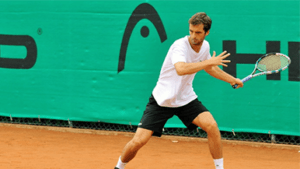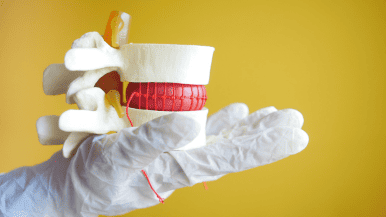 Tennis elbow, called lateral epicondylitis, is associated with pain on the outer (lateral) part of the elbow and is a fairly common occurrence affecting between 1%-3% of the adult population in the United States. It is most frequently seen in individuals between the ages of 40-50.
Tennis elbow, called lateral epicondylitis, is associated with pain on the outer (lateral) part of the elbow and is a fairly common occurrence affecting between 1%-3% of the adult population in the United States. It is most frequently seen in individuals between the ages of 40-50.
Tennis elbow is known to orthopaedic sports medicine specialists as an overload or overuse injury, usually manifesting after continued minor and often unnoticed strain or trauma of the extensor muscles of the forearm. Despite the name tennis elbow, only about 5% of people with the condition can attribute its cause directly to tennis.
Tennis elbow involves the tendon that comes from your elbow that helps you lift your wrist. That tendon is called the extensor carpi radialis brevis (ECRB). It attaches onto the lateral epicondyle, the bony protrusion on the outside of the elbow and joins the muscles of the forearm involved in lifting the wrist and the hand.
What Causes Tennis Elbow
Overuse of the wrist extensor muscles stemming from repetitive wrist motions or power grips seen in sports or other trades causes microtears near the origin of the ECRB at the lateral epicondyle. The tears lead to swelling and the formation of granulation tissue. Lateral epicondylitis can be seen in many work-related situations such as carpentry, construction, house cleaning, and in the mechanic’s shop.
The location of the ECRB makes proper blood circulation challenging which can result in additional damage to the tendon above and beyond normal use and erosion. Blood supply is very limited about half an inch away from where (the ECRB) comes off of the bone.
What are the Symptoms of Tennis Elbow?
Individuals with tennis elbow will usually feel discomfort or tenderness on the outer elbow, along with the forearm or on the back of the hand. The level of pain can vary: one may feel only slight discomfort when bending or extending the elbow, or one may experience extreme pain when the elbow is at rest. The pain can come and go and is often is aggravated when using or twisting the arm.
People with lateral epicondylitis typically experience the following symptoms:
- Pain on the outer upper forearm, beneath the elbow; the pain can also echo down the forearm towards the wrist
- Discomfort or stiffness when raising, bending or extending the arm like when lifting weights
- Pain when holding or gripping objects like a cup or a pen
- Discomfort when twisting the arm like turning a doorknob or opening a can
Treating Tennis Elbow
The majority of tennis elbow patients are able to recover from the condition through the use of non-surgical treatment methods. A wide range of conservative treatments exist for tennis elbow, and a multi-disciplinary approach is often used involving your orthopaedic specialist and physical therapists.
Rest and non-prescription pain medicine are usually the first methods employed to heal from tennis elbow. Using a brace on the back side of the forearm can reduce pain and allow stiff and tight muscles and tendons to rest. A doctor may recommend steroid injections to alleviate swelling and to allow other symptoms to settle while the patient heals on their own.
For a certain number of patients, rest and/or steroid injections may not prove effective, and in that case, other therapeutic means are available to patients including less invasive techniques and surgical techniques such as a specialized injection of platelet-rich plasma (PRP), ultrasound-guided release of the tissue with a needle, and surgery which can be performed ultrasonically or with an open incision.
Surgery to treat tennis elbow is usually considered as a last resort when a patient has persistent symptoms for more than six months that conservative treatments have failed to resolve. The surgeon will make a tiny incision over the elbow and will remove any damaged tissue from the tendon, trim or repair the tendon, or release and reattach the tendon to the bone. It is normally done as an outpatient procedure lasting only a few hours with patients able to return home the same day.
Following surgery, working with a physical therapist will be a vital part of the recovery process, to restore full function and mobility of the arm. Patients are usually able to begin gentle stretching and flexibility exercises 1-2 weeks after surgery.



